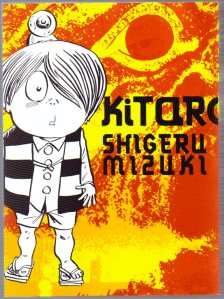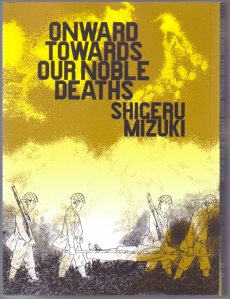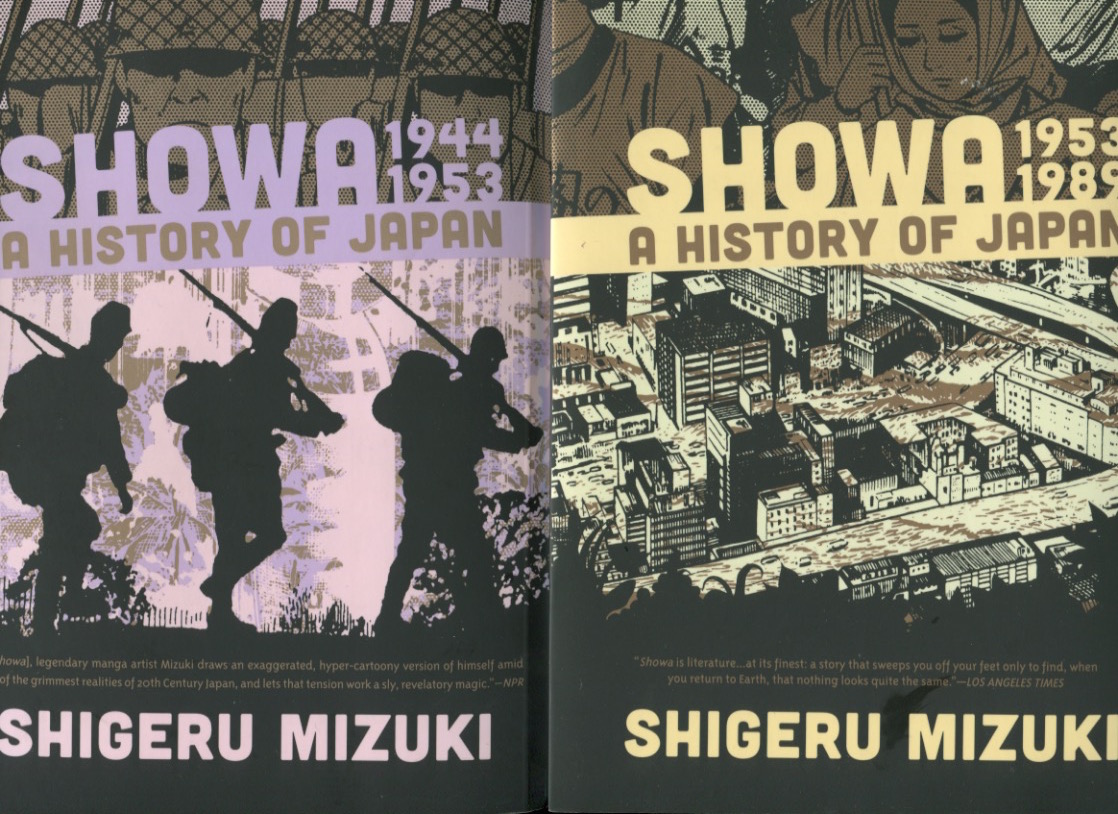This previously published post has been revised, updated and transferred from the old COFFEE TABLE series, which has been discontinued, to the more recently added FROM MY LIBRARY series of posts, as the Sixth Reading.
It was looking likely that I was going to have a yōkai Xmas with master mangaka Shigeru Mizuki material on my reading list for December, however, the reading did not get underway until after the New Year period. In any case it was a wonderful read. This industrious creator of both autobiographical and fantasy manga with the gekiga approach to graphic storytelling of placing cartoon style characters over realistically drawn backgrounds has reached legendary status in Japan but needs to be better known in the rest of the comics world. Welcome to another visit to my little library collection of comics art, with books, journals and associated paraphernalia related to my research, study and enjoyment of the comics medium. Today, manga!

Mizuki’s cover illustration for GARO magazine of his character Kitaro carrying a basket crammed full of yokai characters.
After serving in New Guinea for the Japanese army in World War II Mizuki got his start in graphic storytelling as an apprentice artist in kamishibai, or paper theatre, in which successively shown painted cards operated and accompanied with vocal and musical narration by a street performer, told a story to audiences standing on street corners in Japan. Mizuki moved on to the print media from street theatre, making manga for the rental market and participating in the emerging gekiga form of alternative comics developed by Yoshihiro Tatsumi. Interested in the ghosts and spirits of Japanese folk tales he developed his Kitaro character in a series of yōkai stories based on a popular kamishibai play by Masami Ito called Hakaba Kitaro from 1930s.
Mizuki found an outlet for his stories in GARO magazine, an eye-catchingly creative, comics art anthology publication of alternative manga. There he gained an assistant, Yoshiharu Tsuge, the developer of nejishiki, or Screw Style manga. In the stories Kitaro’s deceased father, Medama Oyaji, reanimates himself as an eyeball and, with the eyeball as a head, grows a new body, hangs out in Kitaro’s hair and his hollow eye socket(Kitaro had lost one eye) and tries to help his son with his adventures.

One of Shigeru Mizuki ‘s manga on my library shelves…this one featuring his popular one-eyed character, Kitaro.
An increasing number of Mizuki’s works have been translated into English and published by the outstanding Canadian comics art publishing group Drawn & Quarterly. This is a very serious comics based publisher that not only publishes comics and graphic novels but also analytical textual studies of the comics medium.

Autobiographically based war comic on Mizuki’s time served in the Japanese army in the Pacific in World War II.
In Onwards Towards Our Noble Deaths (originally published as Soin gyokusai seyo! in 1973) based on his own experiences in the Japanese army in New Guinea during World War II, he portrays the sadistic officers who, driven by their ideological beliefs, were cruel to their own troops. This English translation has an introduction by comics analyst and critic Frederik L. Schodt.
SHOWA 1926-1989 is a four volume history presented in manga form with contrasting graphic treatments of the history portrayed with the newspaper/media representation running alongside the cartoon adventures of Mizuki and his family living that history or the effects of it. It’s an awesome manga publication.
UPDATE: 30 NOV 2015. There was some sad news today that Shigeru Mizuki has died, aged 93!




